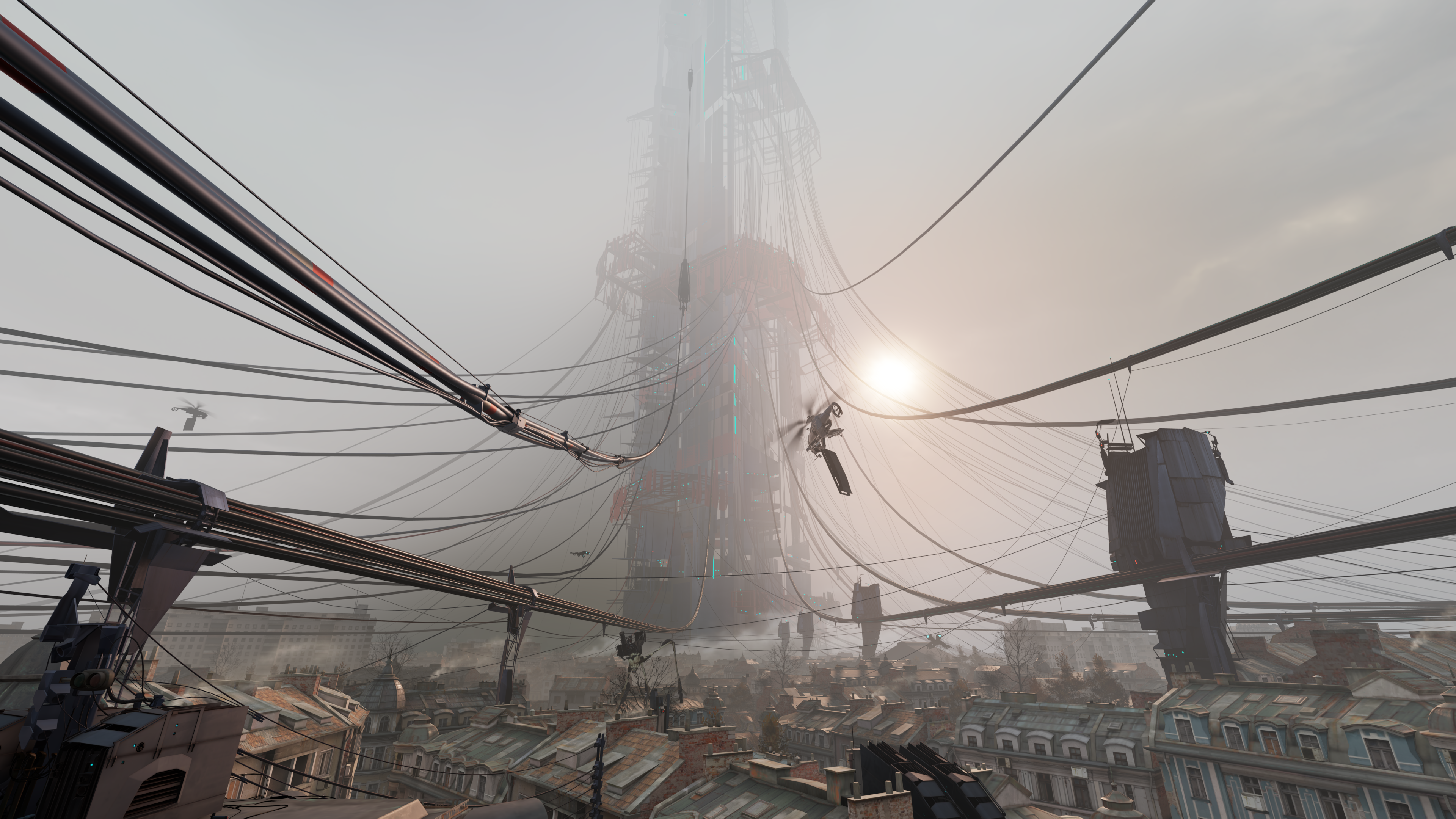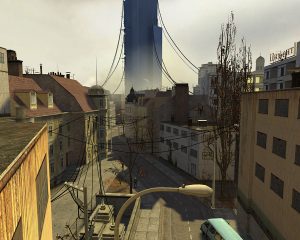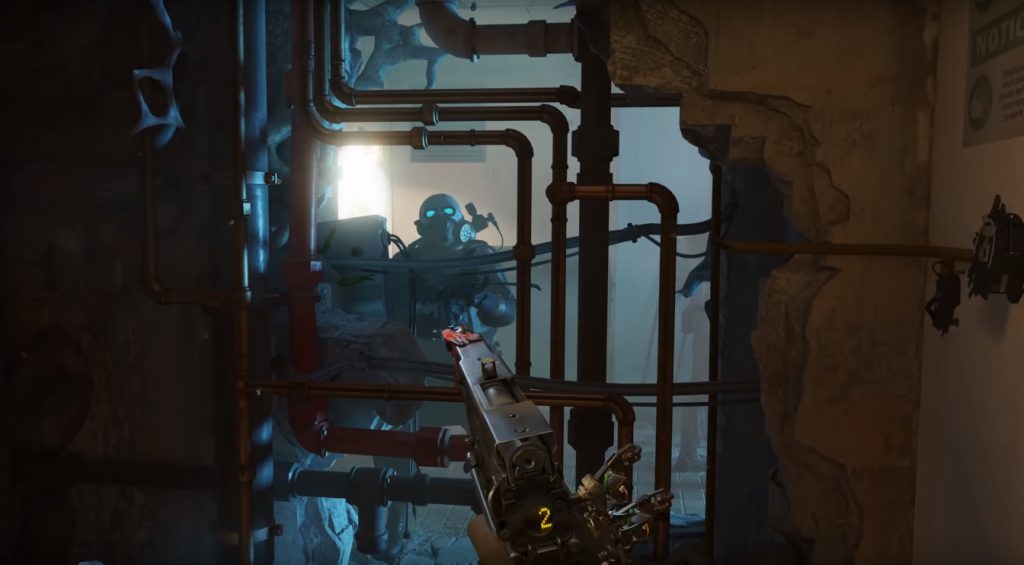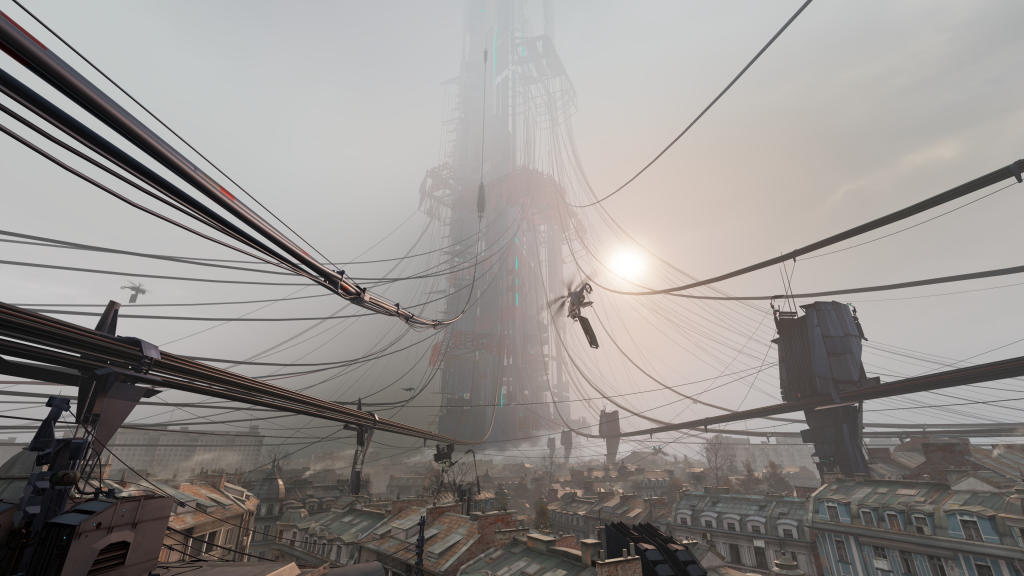
27 May It’s a Shame That Half-Life Alyx is a Shooter
I love playing with new technology. I may begin skeptical – part of the reason I’m a future technologies developer is because of that process of “playing around” in the new and novel. I would argue video games are a good way of doing that with computational advancements. They’re generally intended to be engaging to a lot of people; they expose the strengths and limitations the technology by pushing what’s possible and they teach the player their systems and hopefully more about what the computer can do. In VR’s case, I’m just glad I don’t mind shooting many, many, things to do it, because I know a lot of people who would take one look at an experience like that and say, “no.”
Half-Life: Alyx is the most recent entry in the Half-Life franchise and the first to be a VR experience. More than that, Half-Life Alyx is the VR experience, released on and designed for what aims to be the VR headset, the Valve Index. Valve, the studio behind both the headset, the game, and Steam, the distribution system, had previously designed the HTC Vive, and from my estimation sought to outdo the competition again and release the premier headset. It currently has the highest resolution, widest field of view, highest potential refresh rate, and most technologically interesting controllers that track the player’s individual fingers as they hold the controllers in their palms. It’s absolutely the least accessible in terms of cost, but if I wanted to show someone the best possible VR experience, I would want to put them in this. Again, it’s a shame the best experience is a shooter.
I don’t write that to disparage Alyx exactly. It’s fantastic. The game is a prequel to Half-Life 2 and places the player in the role of one of the most important supporting characters in the original, Alyx Vance. In Half-Life 2, Alyx routinely helps the player, a scientist named Gordon Freeman, as much as the player helps her. She’s clearly shown to be capable and clever, avoiding and dispatching the trans-dimensional Gestapo-like Combine.

Photo cred: Half Life Wiki 
Photo cred: ExtremeTech 
Photo cred: Half Life Wiki
In Alyx, she takes the starring role. The player is tasked with exploring the vaguely eastern-European City 17, collecting ammo and resin by moving boxes, climbing through windows, and killing many Combine and zombie-like creatures taken over by other trans-dimensional beasties. To start, the game is gorgeous. The scenery of City 17 is just dilapidated enough to evoke the sense of a city in occupation, brought out to an even higher degree by the ability to examine things up close in VR.
Despite the visual noise, the game is impeccably designed and paced. Cables run from doors blocking your obvious passage, leading you to the solutions to locked doors. Enemies have clearly defined audio cues (or don’t intentionally in one case) which cue you into where you should be looking as if you heard a sound in your own house. Gunfights are thrilling, and their focus on smaller numbers than previous titles shows one of the ways in which VR both limits the efficiency of the player’s ability to act and heightens the tension. When even just one skulking Combine comes barging into the room, I know I’m in for a protracted fight, while in Half-Life 2 one Combine would be a trivial problem. Nothing in this game would feel the same outside of VR, from the safety of a computer monitor.

Object interaction in Alyx is easily the best I’ve ever experience. Objects can be pushed, pulled, and manipulated like you would expect with your physical hands. Your fingers will grip nearly any object in the way you would expect fingers to grip, you can pass objects between your hands and many objects can be gripped with two hands to ease in moving them. This all plays into the search for ammo and resin, which provides the motivation to play around with these mechanics. In frantic moments you must quickly grab and throw things aside looking for one more clip, and in other cases, you’ll carefully examine a room and move box after box to find your prize hidden behind them. It’s hard to articulate why natural hand interactions like this are hard to pull off but trust me, this is not the default experience of VR.
On top of that, Valve knew where to push the physicality of these interactions and where to stop short and favor accessibility or usability. Large boxes magically become light as a feather when held with two hands so you don’t need to drag them around like you might in real life. Your hands are outfitted with an in-game reason to be able to grab objects at a distance, relieving you of the need to bend over repeatedly or necessarily physically reach every single object hidden away in every corner. Certain objects, like your guns, are un-droppable and easily switched to by a clever inventory selection system, so you can’t accidentally drop your gun because you were fumbling with the controllers.
But this all leads me back around to my central complaint, it’s a shooter. During a recent at the time of writing this showcase of next-generation Xbox games, as I was watching yet another parade of titles that are by and large about violence, one of which literally plastered on the screen “Kill them all” I couldn’t help but feel that we’re letting down everyone who isn’t excited to lock and load another mag into their submachine gun. And by everyone, I mean most human beings. I know with certainty that no matter how compelling I find Alyx, no matter how thrilling the gunfights are and how natural the objects behave I can’t share that with people who don’t want to “kill them all.” What’s worse is I can’t share most of VR, let alone most games. There are absolutely models we can follow of games that try to expand the range of experiences available, but if we want to expose more people to the fun, we already have with VR now, Futurus may have to invent it.







